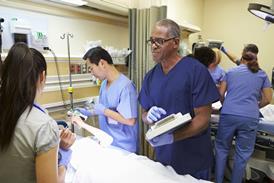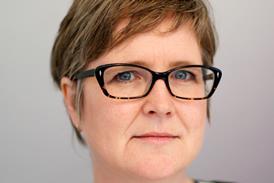Covert camera footage is increasingly being used to bring substandard care to light, but to endorse surveillance the Care Quality Commission would first have to overcome some legal and ethical hurdles, writes Michael Boyd
Collating direct evidence to support a case of abuse has generally represented a significant hurdle for anyone with a concern about standards of care. In many cases, relatives and whistleblowers feel they must resort to covert filming – and there have been some spectacular results in identifying perpetrators and supporting criminal convictions.

‘The proposal to issue guidance on covert surveillance in care facilities certainly grabbed headlines’
All of this highlights not only the frustration and anger felt by many that their complaints are not being listened to, but also the difficulties faced by providers and regulators in investigating claims.
It is challenging to collate evidence of abuse in the absence of such techniques because, in many cases, victims are unable to speak out themselves.
The plan by the Care Quality Commission to issue guidance to both providers and relatives in connection with the use of covert surveillance in care facilities certainly grabbed headlines this autumn. The watchdog acknowledges that while responses to its consultation on incorporating covert surveillance techniques into the new inspection regime were “hugely mixed”, it does feel covert surveillance has a role to play in monitoring standards of care.
A question of confidence
Although incidents of abuse remain the exception, the cases that have come to light since the watershed represented by the Winterbourne View scandal have attracted a lot of publicity and criticism. This has, in turn, undoubtedly had an adverse impact on public confidence in the wider care industry.
The fact that both the regulator and operators are advocating the use of surveillance measures that, until recently, would have been unthinkable, is a clear indication of the degree of concern within the sector.
Ethical and political debates aside – of which there are many – the absence of clearly supportive consultation responses is only one of the many hurdles that the CQC has to overcome in order to include covert surveillance as part of its new inspection regime.
A change in the law would be required for the use of CCTV to be a tool that could be used lawfully by the CQC. Even then, it is likely to face other legal issues.
The CQC described its proposed guidance as highlighting the issues providers and members of the public need to consider if they are thinking of using cameras. Given the increasing use of this technique in what is a sensitive area for patients and their care providers, as well as the staff employed to work in care settings, this is a helpful step to take.
Avoid a fear culture
The issue involves a number of difficult legal and ethical issues, including data protection, consent and human rights. There are also legitimate concerns that large scale use of cameras may compromise the freedom, privacy and dignity of the people filmed, and that cameras may create a “fear culture” that demotivates staff and deters people pursuing a career as a carer.
‘I would expect the guidance to highlight the fact that incidents of abuse remain the exception’
As such, some assistance in this complex and emotive area should be welcomed. However, it also represents a clear endorsement of the gathering of evidence in a way that the CQC does not have the power to collect itself, but which it would no doubt be happy to use.
There is a danger that the guidance could be used as a “snoopers’ charter”, resulting in CCTV being the default response, rather than the solution of last resort.
I would expect the guidance to:
- highlight the fact that incidents of abuse remain the exception;
- include a clear statement about the legal and ethical framework within which CCTV should be used; and
- remind people that there is an overriding need to respect a patient’s expectations for dignity and that solutions should not be imposed or proposed without careful consultation and, wherever possible, consideration for their wishes.
The guidance is a signal that the CQC is responding to patient and family concerns, as well as supporting proposals from providers, but whether this alone will restore confidence in the provision of care remains to be seen.
Michael Boyd is head of healthcare at commercial lawyers DWF



























No comments yet